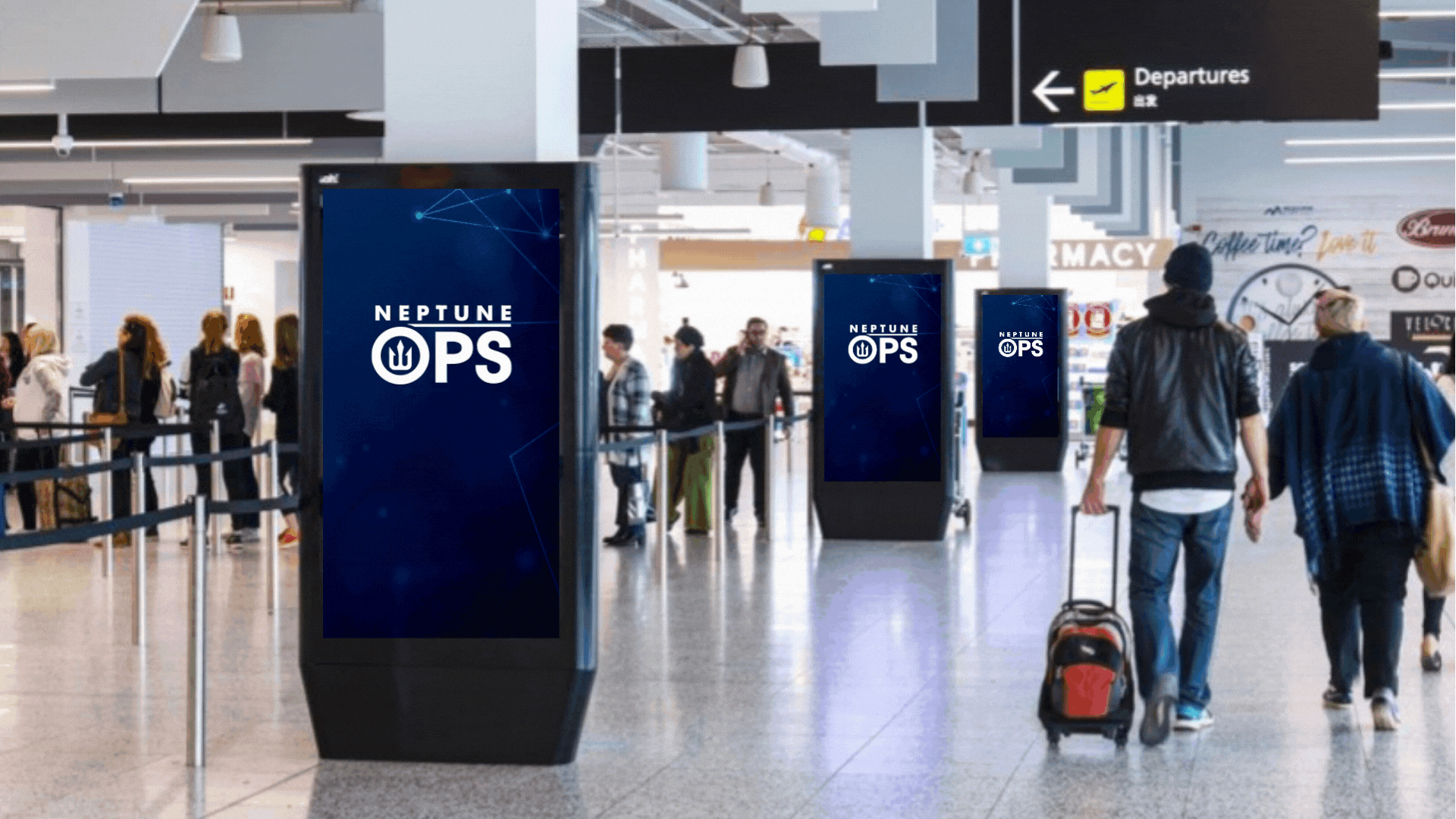.webp)

🔱 Sign up for a free demo today to see how the latest AI and digital advocacy tools can transform your work.
3 Minute Read
Digital-out-of home is perhaps the most overlooked form of advertising in public affairs. This is both a shame and an opportunity for you, because the campaigns that smartly deploy it have an outsized impact on the conversation. In today's short read, we show you how to maximize your digital out-of-home game.
.gif)
Digital out-of-home (DOOH) is advertising on electronic screens located in public places. Think of it as replacing traditional printed billboards and posters with digital displays that can change content instantly, show videos, and even respond to real-time data.
Common Examples of DOOH:
🔱 Digital billboards on highways
🔱 Airport terminal screens
🔱 Transit screens in subway stations and bus stops
🔱 Elevator and lobby screens at hotels, conference centers, and office buildings
🔱 Displays in dining, shopping, and mixed use areas
🔱 Gas station pump screens
.jpeg)
DOOH has several distinct advantages over traditional out-of-home advertising that make it particularly well-suited for public affairs:
🔱 Precision time purchasing: DOOH lets you purchase ads by day and even time of day when your targets will be in the location. Think policy-makers commuting to capitals, attending a town hall, or speaking at a conference.
🔱 Pinpoint locations: With DOOH you can pick locations such as transit stops near government offices, airport terminals near legislator parking lots, or specific screens inside a building.
🔱 Rapid creative changes: If you print and install a traditional billboard and something changes with your issue, you're stuck with a large sunk cost and a billboard that you may no longer want people to see. But with DOOH, you can make rapid creative changes just as you would with any other digital format.
🔱 Flexible contract length: Traditional out-of-home advertising often requires multi-month contracts. If something changes on your issue, you're still stuck paying for the ad. DOOH typically has no contract length, allowing you to change strategy as needed.
🔱 Price: Traditional out-of-home advertising requires you to pay printing costs, installation costs, and then the cost for the ad placement itself. And because you're forced to pay for months at a time, the costs add up quickly. With DOOH, you can buy ads per impression, without installation costs. An extra benefit is that you can typically re-purpose your other digital content, thereby avoiding additional production costs.

While each of the above benefits makes DOOH compelling for public affairs campaigns, there's one additional advantage that makes DOOH truly powerful. Imagine you're trying to generate maximum noise on your issue. You're on the decision-maker's connected TV, their phone, their desktop, their tablet, in their audio feed. And just when the target puts down their screen to get away from the noise, they look up, and they still see your message, but this time in the physical world.
We have seen the psychological impact of this strategy play out many times. That marginal DOOH ad impression is not just one more message. It shows the decision-maker that you are everywhere, that people around them are also seeing the message, and that they can choose to ignore you at their own risk.
This in-your-face strategy isn't for every campaign. But when you need to make a point, DOOH can be the message that makes the difference.
.jpeg)
🔱 The next time you travel in or out of DC, notice the DOOH at National, Dulles, or Union Station. Think through who the public affairs players are that are deploying this strategy.
🔱 Take a Metro ride at Capitol South and notice the DOOH on the platform. Members of Congress might not be seeing that ad, but their staff probably is.
🔱 Consider an upcoming campaign and think about where and when your audiences are likely to be out-of-home. Then look for DOOH inventory in these places.
🔱 If you're enjoying this content, please consider forwarding this email to a colleague or friend.
🔱 If you're not already a subscriber, please sign up here to stay up to date on the latest developments in political technology.
🔱 If you have suggestions for future newsletters or any other feedback, we'd love to hear from you.